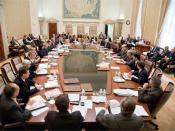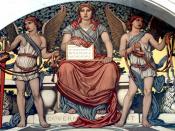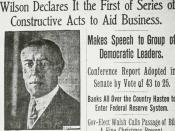The Federal Reserve System, or America's central bank, was created on December 23, 1913. It has created and fulfilled many services for the government and people within the United States. These services include the regulation of financial institutions, maintaining of the payments system and consumer protection laws, and conducting and overseeing monetary policy.
The Fed has several unique features which sets it apart from other financial institutions. In essence, the Fed is a decentralized, centralized bank. It is composed of twelve different districts, each of which represents a designated region within the United States. Because the goals of the banks were to serve the individuals, these districts ensured that no bank would become too large and powerful to overtake others while still being responsive toward local community needs. After the Great Depression, Congress transferred power to the Federal Reserve Board in Washington D.C.; this made the Fed more of a centralized unit.
Private corporations and individuals are still able to own shares--similar to stock--in the Fed. Thus, privately owned member banks are able to have direct input into the actions of the Fed and restrict the role of government. This all would not have been accomplished had it not been for a well-structured organization.
The structure of the Fed is indeed unique. A seven-member Board of Governors controls the activities of the Fed. It also sets the policies for the Federal Reserve and its member banks to follow, and regulates certain operations of state-chartered member commercial banks. The Federal Open Market Committee regulates most of the decisions regarding the growth of the money supply and interest rates; these are ways in which monetary policy is defined. These branches of the Federal Reserve System carry out most of the tasks given to the Fed.
The primary goal of the Fed...


